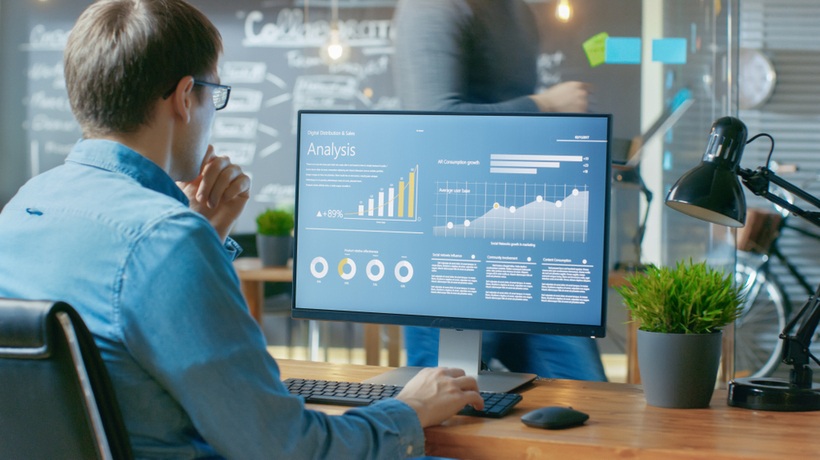The Benefits Of Using eBooks And Big Data For Learning And Research
Books are humanities' go-to resource for "a good read". eBooks and eReaders will soon take over as the world’s new literary vessels. The diversity and accessibility of them resound in volume. They are much more dynamic than their traditional hardcover and paperback counterparts.
When attempting to read any online content, you may sometimes notice a message under the article. It usually gives you an estimate of how long it takes to read the article. Grammar, readability, and length determine these statistics. Data offers statistical insight as well. The analytics can grant developers permissions that find learning patterns and consumer tendencies among various devices. The concept is similar to online shopping search history. We’ve all noticed pop-up ads recommending random items. One may realize these are items related to those from previous searches. This is eerily unnerving and may leave you questioning your privacy. However, utilizing this process for educational data mining would be more beneficial.
Synchronous Learning Is An Innovative New Way Of Using Many Devices Across A Shared Network
Classrooms are able to engage all at once. Students are not separated, nor are their subjects being differentiated. Simply put, with synchronous learning everyone is on the same page. A shared connection allows everyone to use the same resources. Presentations are presented, and everyone has their own personal reading view. Stats are gathered, and patterns are established. By sharing data, students and instructors can assist developers with the continuation of innovation. "Clicks" are what should be used most. With the exception of voice commands, clicking is the only way to access any digital content.
Clicks Can Help Determine What Students Tend To Access Most
(educational wise). Developers can learn what websites students are familiar with. They may discover students use most common websites for educational engagement. Or perhaps, discover the constant usage of outdated or malicious websites. This could help determine the source of many data breaches. Many students are often reluctant to share their resources with peers. This leads to the subtle extension of beneficial platforms by students. Although, little is known about them other than the convenience they offer "cunning students". More specific data mining could be that of preparation and editing.
What platforms do students use for grammar? Are students relying solely on Google? Do they properly use Microsoft Office’s built-in grammatical checker and synonym finding feature? Are the institutions personally-integrated platforms being used or are students confident in something else? The use of data can help to realize these things. Furthermore, many pieces of data can be grouped into subcategories. eBooks are much more dynamic than traditional ones. Rather than flipping through pages, a single tap can take you to the glossary or any specific chapter for that matter.
The Use Of Keywords
This allows one to navigate through the text. These things can be used to determine what kind of learner one is. Or rather, they can be used to point out what aspects most people tend to be captured by. For example, those who need pictures and illustrations are deemed "visual learners". Think of someone who learns only by dabbling in and out of certain resources. Statistics may show these people are "skim" learners because they only need a narrow amount of substantive material to gain competency. Instructors can use data as a means to further minimize plagiarism and deception. A shared network and traffic can track whether students are paying attention to the lesson or surfing the web anonymously.
In addition, proctors can monitor the amount of time students actually spent reading course material. This would deter those who work so hard to apply themselves when others only apply a pasted copy. Apple Inc. has implemented features such as fingerprint and facial recognition. The front-facing camera can be used to scan the eyes of readers in the future. A quick scan can give visually-impaired readers easy access to content. The scan could follow eye movement and follow other indicators. This could allow eBook devices to automatically adjust text that suits the reader’s vision. The addition of the "nightlight" feature can be taken further. Accessibility features that mirror the dilation of the human eyes pupils can be used to adjust brightness, rather than having to do it manually.
Today’s Books Are Interactive
However, they have yet to be realized as the next cornerstones of literacy. They may be subject to interactive accessibility but there is still abundant potential left untapped. Though privacy concerns are indeed an issue. Monitoring such specific and fragile data would make many skeptical. Skepticism would be the first response if you told most people data breaches to occur because of their involvement and secrecy. The terminology of SEO can be applied to keywords students and instructors use chronically. This way, developers and creators can find major keys that will unlock many permissions. eBooks, Big Data, and Synchronous Learning will soon exemplify the definition of "separate but equal".









